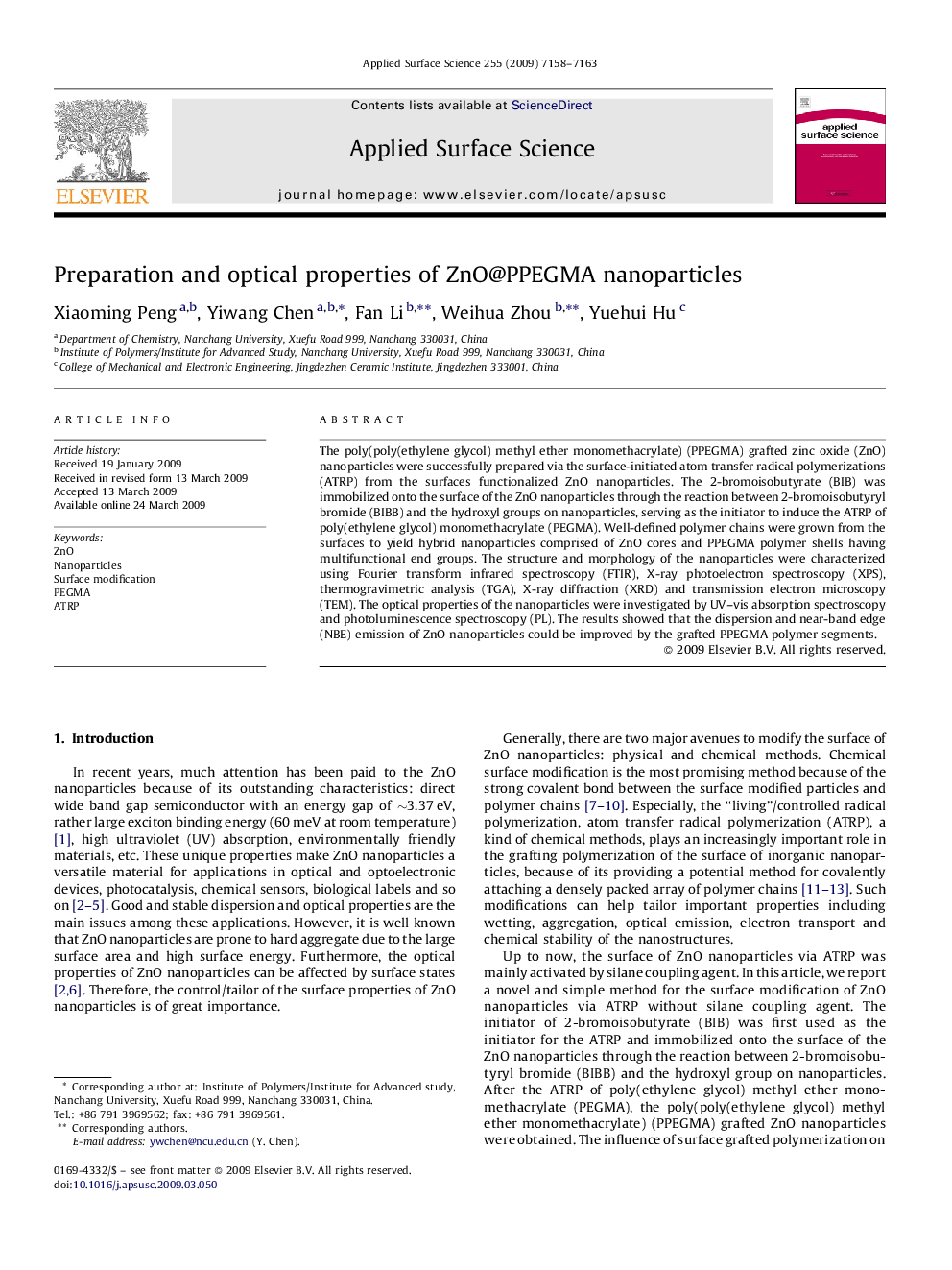| Article ID | Journal | Published Year | Pages | File Type |
|---|---|---|---|---|
| 5367033 | Applied Surface Science | 2009 | 6 Pages |
The poly(poly(ethylene glycol) methyl ether monomethacrylate) (PPEGMA) grafted zinc oxide (ZnO) nanoparticles were successfully prepared via the surface-initiated atom transfer radical polymerizations (ATRP) from the surfaces functionalized ZnO nanoparticles. The 2-bromoisobutyrate (BIB) was immobilized onto the surface of the ZnO nanoparticles through the reaction between 2-bromoisobutyryl bromide (BIBB) and the hydroxyl groups on nanoparticles, serving as the initiator to induce the ATRP of poly(ethylene glycol) monomethacrylate (PEGMA). Well-defined polymer chains were grown from the surfaces to yield hybrid nanoparticles comprised of ZnO cores and PPEGMA polymer shells having multifunctional end groups. The structure and morphology of the nanoparticles were characterized using Fourier transform infrared spectroscopy (FTIR), X-ray photoelectron spectroscopy (XPS), thermogravimetric analysis (TGA), X-ray diffraction (XRD) and transmission electron microscopy (TEM). The optical properties of the nanoparticles were investigated by UV-vis absorption spectroscopy and photoluminescence spectroscopy (PL). The results showed that the dispersion and near-band edge (NBE) emission of ZnO nanoparticles could be improved by the grafted PPEGMA polymer segments.
